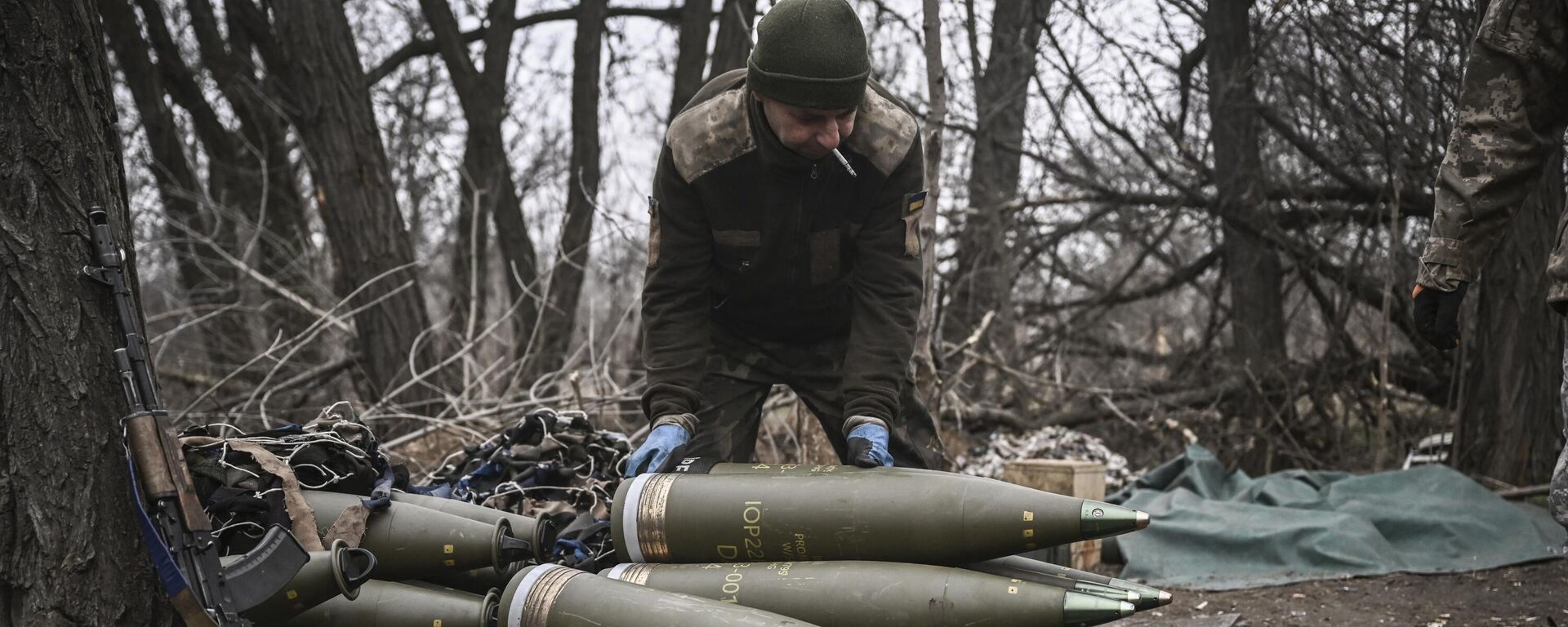https://sputnikglobe.com/20240131/how-can-russia-stop-ground-launched-glide-bombs-us-is-sending-to-ukraine-1116513455.html
How Can Russia Stop Ground-Launched Glide Bombs US is Sending to Ukraine?
How Can Russia Stop Ground-Launched Glide Bombs US is Sending to Ukraine?
Sputnik International
The Pentagon plans to ‘field test’ a new, ground-launched variant of its deadly Small Diameter Bomb design in real world battlefield conditions in Ukraine. What are these weapons? What dangers will they pose to Russian forces and civilians in frontline areas? How can Russia defeat them? Sputnik explores.
2024-01-31T12:09+0000
2024-01-31T12:09+0000
2024-01-31T12:11+0000
military
ukraine
russia
military & intelligence
pentagon
high mobility artillery rocket system (himars)
multiple-launch rocket systems (mlrs)
ground launched small diameter bombs (glsdb)
sputnik explains
https://cdn1.img.sputnikglobe.com/img/07e8/01/1f/1116513291_0:0:1536:864_1920x0_80_0_0_688cf39349c7115d0fe9036e3e0c1b76.png
Sources told Politico on Tuesday that Ukraine is preparing to receive a delivery of the US’ new Ground-Launched Small Diameter Bombs (GLSDBs) as soon as this week.The deliveries will give Kiev “a deeper strike capability they haven’t had” and “complement” the Ukrainian military’s “long-range fire arsenal,” a US official familiar with the transfer boasted. The weapons, which even the US military doesn’t have in its arsenal yet, will serve as “an extra arrow in the quiver that’s gonna allow them to do more,” the official said, without elaborating.What is the Small Diameter Bomb?Developed in the mid-2000s by US aerospace and defense giant Boeing’s Integrated Defense Systems division, the original GBU-39 Small Diameter Bomb was envisioned as an air-dropped glide bomb designed to target an array of stationary ground targets, ranging from bunkers and electronic warfare jamming equipment to airfields, fuel depots, barracks, and troop concentration.The GBU-39 is equipped with a 285-pound (130 kg) bomb and has a 206-pound (93 kg) penetrating blast fragmentation warhead – enough to punch through up to three feet of steel-reinforced concrete, and can be guided by a combination of active radar homing, laser guidance, GPS, and inertial navigation, depending on configuration and model. The system boasts a circular error probable of about one meter, and has a range of between 75 and 110 km.The GBU-39 is a glide weapon, which, as the name suggests, means the bomb glides to its target along a pre-designated flight path at low speeds, without the assistance of rocket engines. The system’s comparatively low cost (as little as $40,000 apiece compared to $3.2 million for the Storm Shadows Kiev has been receiving from Britain and using to terror bomb Donbass, for example, combined with its small radar signature and comparatively short flight time makes it difficult to detect and intercept using traditional air defenses.What is the Ground-Launched Variant of the Small Diameter Bomb?With Ukraine’s Air Force hard pressed to get its aircraft into the skies due to the constant threat of Russian air defenses and interceptor warplanes, the US and its allies have committed significant resources to converting ordinarily air-launched weapons for launch from ground-based systems (for more information check out the US military-industrial complex’s "FrankenSAM" program for Ukraine).Besides air defenses, another component of efforts to convert ordinarily air-launched weapons from the ground revolves around rocket artillery. That’s where the Ground-Launched Small Diameter Bomb comes in. Unlike its air-launched cousin, the modified GBU-39 is fitted with an engine from the M26 rocket motor used by the M270 and HIMARS multiple launch rocket systems (MLRS) to propel it toward its target.Developed by Boeing and Swedish defense giant Saab in the mid-2010s, the GLSDB is said to have a range of up to 145 km, and has a reported price tag of about $100,000 apiece.With the US and its allies having already sent dozens of MLRS artillery platforms to Ukraine over the past two years, the delivery of new ground-launched Small Diameter Bombs is expected to provide Kiev with an instantaneous new long-range strike capability.How Many GLSDBs Will Ukraine Get?With US funding for Ukraine running out in December and the Pentagon forced to dip into its own dwindling stockpiles to assist Kiev, it’s not clear how many of the newfangled ground-launched GLSDBs Ukraine will receive. When plans to deliver the weapons were first announced a year ago as part of a $2.17 billion arms package, US media mentioned a figure of two launchers and 24 weapons total.That would be enough for Kiev to attempt strikes deep behind Russian lines, or to launch terror attacks against cities in Donbass or other Russian border settlements, but not enough to have any serious strategic impact – where quantity of available munitions has proven key.Where Have Small Diameter Bombs Been Used?Ukraine’s military will be the GLSDB’s first operator, with the Chinese breakaway island province of Taiwan expected to follow at a later date.The original SDB was used by the US and its allies in conflicts across the Middle East and Asia, from Iraq and Afghanistan, to Syria and Gaza (where it has been used by Washington’s Israeli ally), and Yemen (deployed by members of the Gulf-led coalition against the Houthis). In each instance, GBU-39s successfully targeted forces fighting US or allied militaries, but in no case has their deployment resulted in or even contributed to a strategic victory for an aggressor power.How Can Russia Defend Against Ground-Launched GBU-39s?As mentioned above, glide bombs’ design characteristics and principle of operation makes them difficult to intercept and destroy, but that doesn’t mean the task is impossible. Russia’s response to GLSDB deployment by Ukraine will likely include:
https://sputnikglobe.com/20240130/us-made-small-diameter-bomb-expected-to-arrive-in-ukraine-as-soon-as-wednesday--reports-1116501447.html
https://sputnikglobe.com/20240130/joint-uk-japan-plan-to-supply-artillery-shells-to-ukraine-falls-through--reports-1116485726.html
https://sputnikglobe.com/20240127/russian-air-defenses-downed-seven-himars-and-vampire-mlrs-rockets-in-24-hours--defense-ministry-1116434469.html
ukraine
russia
Sputnik International
feedback@sputniknews.com
+74956456601
MIA „Rossiya Segodnya“
2024
News
en_EN
Sputnik International
feedback@sputniknews.com
+74956456601
MIA „Rossiya Segodnya“
Sputnik International
feedback@sputniknews.com
+74956456601
MIA „Rossiya Segodnya“
what kind of glide bomb is us sending ukraine, what is the ground-launched small diameter bomb
what kind of glide bomb is us sending ukraine, what is the ground-launched small diameter bomb
How Can Russia Stop Ground-Launched Glide Bombs US is Sending to Ukraine?
12:09 GMT 31.01.2024 (Updated: 12:11 GMT 31.01.2024) The Pentagon plans to “field test” a new, ground-launched variant of its deadly Small Diameter Bomb design in real world battlefield conditions in Ukraine. What are these weapons? What dangers will they pose to Russian forces and civilians in frontline areas? How can Russia defeat them? Sputnik explores.
Sources told
Politico on Tuesday that Ukraine is preparing to receive a delivery of the US’ new Ground-Launched Small Diameter Bombs (GLSDBs)
as soon as this week.
The deliveries will give Kiev “a deeper strike capability they haven’t had” and “complement” the Ukrainian military’s “long-range fire arsenal,” a US official familiar with the transfer boasted. The weapons, which even the US military doesn’t have in its arsenal yet, will serve as “an extra arrow in the quiver that’s gonna allow them to do more,” the official said, without elaborating.
What is the Small Diameter Bomb?
Developed in the mid-2000s by US aerospace and defense giant Boeing’s Integrated Defense Systems division, the original GBU-39 Small Diameter Bomb was envisioned as an air-dropped glide bomb designed to target an array of stationary ground targets, ranging from bunkers and electronic warfare jamming equipment to airfields, fuel depots, barracks, and troop concentration.
The GBU-39 is equipped with a 285-pound (130 kg) bomb and has a 206-pound (93 kg) penetrating blast fragmentation warhead – enough to punch through up to three feet of steel-reinforced concrete, and can be guided by a combination of active radar homing, laser guidance, GPS, and inertial navigation, depending on configuration and model. The system boasts a circular error probable of about one meter, and has a range of between 75 and 110 km.

30 January 2024, 19:00 GMT
The GBU-39 is a glide weapon, which, as the name suggests, means the bomb glides to its target along a pre-designated flight path at low speeds, without the assistance of rocket engines. The system’s comparatively low cost (as little as $40,000 apiece compared to $3.2 million for the Storm Shadows Kiev has been receiving from Britain and using to terror bomb Donbass, for example, combined with its small radar signature and comparatively short flight time makes it difficult to detect and intercept using traditional air defenses.
What is the Ground-Launched Variant of the Small Diameter Bomb?
With Ukraine’s Air Force hard pressed to get its aircraft into the skies due to the constant threat of Russian air defenses and interceptor warplanes, the US and its allies have committed significant resources to converting ordinarily air-launched weapons for launch from ground-based systems (for more information
check out the US military-industrial complex’s "FrankenSAM" program for Ukraine).
Besides air defenses, another component of efforts to convert ordinarily air-launched weapons from the ground revolves around rocket artillery. That’s where the Ground-Launched Small Diameter Bomb comes in. Unlike its air-launched cousin, the modified GBU-39 is fitted with an engine from the M26 rocket motor used by the M270 and HIMARS multiple launch rocket systems (MLRS) to propel it toward its target.
Developed by Boeing and Swedish defense giant Saab in the mid-2010s, the GLSDB is said to have a range of
up to 145 km, and has a reported price tag of about
$100,000 apiece.
With the US and its allies having already sent dozens of MLRS artillery platforms to Ukraine over the past two years, the delivery of new ground-launched Small Diameter Bombs is expected to provide Kiev with an instantaneous new long-range strike capability.
How Many GLSDBs Will Ukraine Get?
With US funding for Ukraine running out in December and the Pentagon forced to dip into its own dwindling stockpiles to assist Kiev, it’s not clear how many of the newfangled ground-launched GLSDBs Ukraine will receive. When plans to deliver the weapons were first announced a year ago as part of a $2.17 billion arms package, US media mentioned a figure of two launchers and
24 weapons total.
That would be enough for Kiev to attempt strikes deep behind Russian lines, or to launch terror attacks against cities in Donbass or other Russian border settlements, but not enough to have any serious strategic impact – where quantity of available munitions has proven key. 
30 January 2024, 12:38 GMT
Where Have Small Diameter Bombs Been Used?
Ukraine’s military will be the GLSDB’s first operator, with the Chinese breakaway island province of Taiwan
expected to follow at a later date.
The original SDB was used by the US and its allies in conflicts across the Middle East and Asia, from
Iraq and
Afghanistan, to
Syria and
Gaza (where it has been used by Washington’s Israeli ally), and
Yemen (deployed by members of the Gulf-led coalition against the
Houthis). In each instance, GBU-39s successfully targeted forces fighting US or allied militaries, but in no case has their deployment resulted in or even contributed to a strategic victory for an aggressor power.
How Can Russia Defend Against Ground-Launched GBU-39s?
As mentioned above, glide bombs’ design characteristics and principle of operation makes them difficult to intercept and destroy, but that doesn’t mean the task is impossible. Russia’s response to GLSDB deployment by Ukraine will likely include:
continuing operations to target HIMARS and M270 fire positions, ammunition, supply, and repair depots using artillery and precision missile strikes.
deploying radio-electronic jamming equipment to degrade the weapons’ accuracy (although this will not affect onboard inertial guidance systems, without GPS the glide bombs are less precise).
shooting the glide bombs down using the dense array of conventional air defenses along frontline areas, from the Tor and Buk missile system to close-in anti-aircraft guns.

27 January 2024, 15:47 GMT





